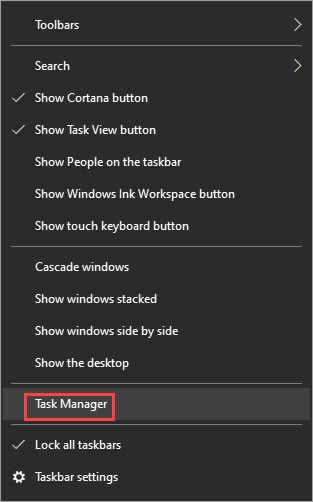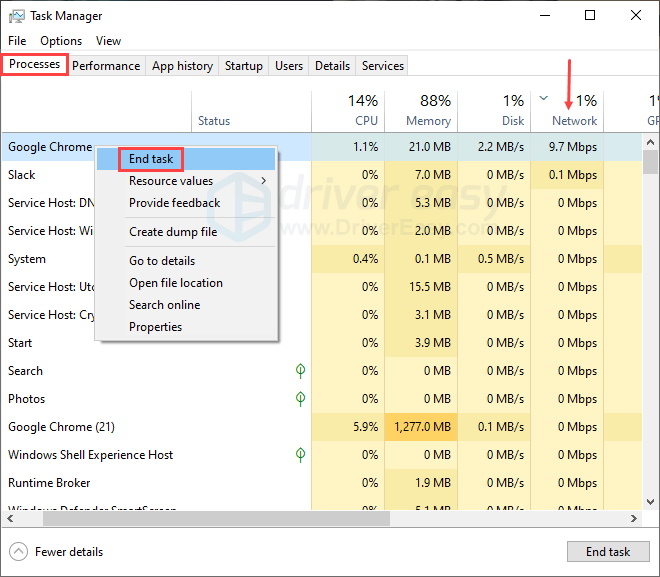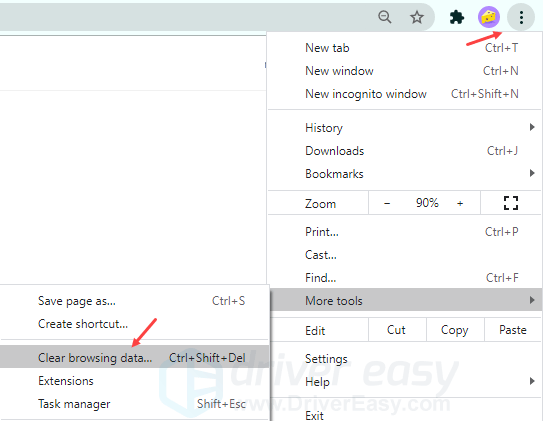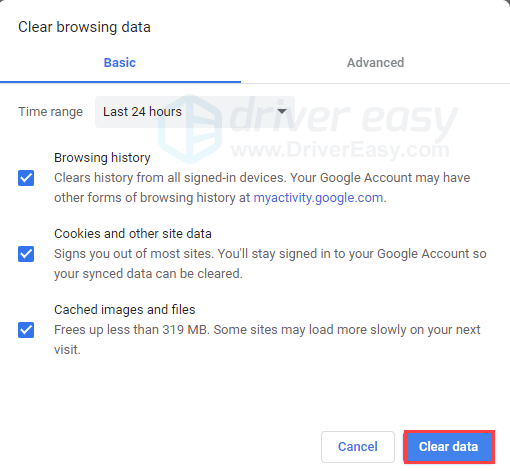Does Netflix keep buffering when you’re watching on your browser? You’re not alone, this is a very common issue. The good news is it’s also an easy one to fix. In this article, we’ll go through some working fixes that you can try.
Try these fixes…
You don’t have to try them all. just work your way down the list until you find the one that does the trick!
1: General troubleshooting steps
2: Check your internet connection
3: Close bandwidth-hogging programs
Fix 1: General troubleshooting steps
Before we dive into anything advanced, it’s always helpful to check the basics. Here are some general troubleshooting steps you can try or should pay attention to:
- Refresh the webpage or restart your browser
- Reboot your PC
- Avoid using public Wi-Fi
- Try another device to test the issue
- Avoid using school/company network
If this doesn’t help, try the next fix.
Fix 2: Check your internet connection
Unstable or unreliable internet connection is the No.1 cause of Netflix buffering. You’ll need a valid and fast internet connection to watch Netflix smoothly. There are a few things you can do to test your internet connection and fix the problem:
- Try to power cycle your router and modem. Unplug the power cables from your router and your modem, leave both of them disconnected for at least 30 seconds, then plug the cables back into both devices. When your Internet is working again, check if Netflix is still loading slow.
- If you’re watching Netflix on Wi-Fi, make sure there’s no overcrowding. In other words, if your Wi-Fi is connected to multiple devices, turn off the Wi-Fi feature on the devices that you don’t need at the moment.
(Also if possible, use a wired connection. It’d provide a more stable and reliable connection which can speed up the video loading.) - Google “Internet speed test” and pick a tool to test your Internet speed. If your Internet connection is unreasonably slow, consider contacting your Internet service provider for help.
- If you’re using a VPN to access Netflix, you can switch between servers to test which one gives you a faster speed. Note that Netflix may detect your VPN connection and stop you from watching. You can try restarting the VPN software to fix the issue.
If your Internet connection seems fine but Netflix is still buffering, try the next fix.
Fix 3: Close bandwidth-hogging programs
Programs running in the background can eat your bandwidth, so don’t forget to close the ones you don’t need before you start watching Netflix. Also make sure you’re not downloading large files or loading other videos. Here’s how to shut down bandwidth-hogging programs:
- Right-click your taskbar, then click Task Manager.

- Under the Processes tab, look for the processes that are network-hogging, such as your browser, Twitch, Zoom, Skype, and music players. Right-click it then click End task.

Check if Netflix loads quicker now. If Netflix is still stuck at loading screen, move on to the next fix.
Fix 4: Clear browser cache
When your browser has stored excessive or broken cache, it could slow down your connection or lead to weird web browser behavior. If your Netflix still keeps buffering, try clearing your browser cache. Here’s how:
- Press Ctrl and Shift and Delete at the same time to access the cache-clearing feature on your browser. This hotkey should work for most browsers, but if yours doesn’t work, look for clear browsing data/history in your browser settings.

- Click Clear data.

- Restart your browser to test the issue.
If your Netflix still takes forever to load the video, there’s one more fix you can try.
Fix 5: Update your network driver
If none of the fixes solve your problem, you may try updating your network driver. An outdated or faulty network driver may trigger random connection issues. You may want to make sure yours is up-to-date and functioning properly.
There are two ways you can get the right driver for your network adapter: manually or automatically.
Manual driver update – You can update the network driver via Device Manager. If Windows doesn’t give you the latest available driver, you can search on the manufacturer’s website. Be sure to choose only a driver that’s compatible with your Windows version.
Automatic driver update – If you don’t have the time, patience, or computer skills to update your drivers manually, you can, instead, do it automatically with Driver Easy. Driver Easy will automatically recognize your system and find the correct driver for your exact network adapter as well as your Windows version, then it will download and install it correctly:
1) Download and install Driver Easy.
2) Run Driver Easy and click the Scan Now button. Driver Easy will then scan your computer and detect any problem drivers.
3) Click the Update button next to the flagged network adapter driver to automatically download the correct version of the driver, then you can manually install it (you can do this with the FREE version).
Or click Update All to automatically download and install the correct version of all the drivers that are missing or out of date on your system. For example, I’m updating my graphics driver here as well (This requires the Pro version which comes with full support and a 30-day money-back guarantee. You’ll be prompted to upgrade when you click Update All.)
Restart your PC for the new driver to take effect.
Hopefully this article is helpful! Please feel free to leave a comment if you have any questions or suggestions.





